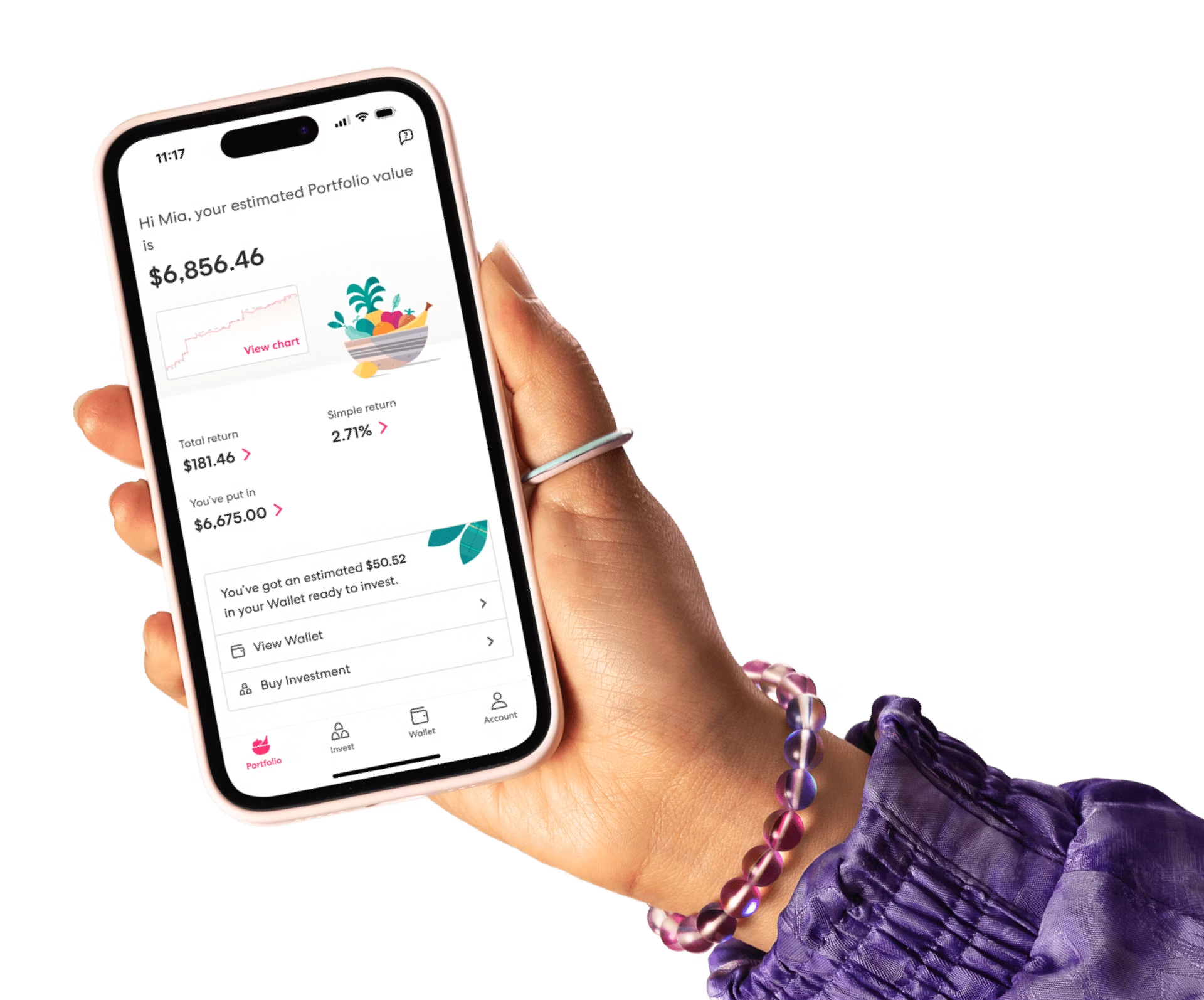Is it too late to start investing?
When you read about investment horizons, you might think investing for the long term is just for people in their 20s or 30s. Well, we’re here with some great news: no matter how old you are, you can get great benefits from investing.

In fact, being a bit older makes some aspects of investing easier than they would have been in your youth.
Here’s some things to think about if you’re looking at investing a little later in life:
You might have more money to invest
We know that everyone’s different. But on average, people tend to make more money in their 40s and 50s than they did in their 20s. According to Stats NZ, people in their 20s make an average of around $900 a week, while people in their 40s make almost $1,400 a week!
We weren’t surprised to see this. When you’re in your 40s, you’ve had 20 more years of building skills and getting qualifications in your job. You might also have more savings, or a successful business. So it makes sense that a 45-year-old would have (on average) $500 more to spend each week than a 25-year-old! Don’t be put off if you’re starting to invest later in life—your higher earning power means you may be able to catch up to your 25-year-old self faster than you think! Ultimately, the best time to start investing is now.
What’s more, if you have more money in your pocket than you did when you were 25, this means you can invest more than you could have back then, while continuing to enjoy your lifestyle!
How short is your time horizon really?
Your time horizon is the period between when you invest your money, and when you expect to need it. A short time horizon would be within the next 2-3 years, while a long time horizon would be over 10 years.
It’s easy to think that younger people have longer time horizons, and older people have shorter time horizons. But the truth is (of course) more complicated than that.
For one, remember that life is long (hopefully). If you’re 45, and you’re investing for your retirement at age 65, you still have 20 years to go! And if you intend on working longer than that, you have even more than 20 years. That’s a really long time horizon. You can put that time to work by investing in a higher-risk, diversified set of assets that should give you a solid long-term return.
If you look at your financial goals, and find that you have a fairly long time horizon, you may be able to have the best of both worlds. Not only can you invest in higher-risk, higher-return investments, you also have more money to invest!
But you might not be investing for retirement—or you might be a bit older than 45. Even so, you can still get some solid returns by investing, even if it’s just for 5 or 10 years. That’s because there are all kinds of investment options in between very low-risk savings, and higher-risk, high return investing.
If you were investing money that you intended on spending in a year’s time, you’d naturally want something very low-risk. And if you were investing money that you didn’t intend on spending for another 50 years, you could take a lot more risk.
But remember that these aren’t the only two options. Sharesies has a range of things to invest in, with all levels of risk. This means you can spread your money around different things that suit your specific time horizon. For example, if your time horizon was short, you could invest in very low-risk assets, like the Smartshares NZ Cash Fund on Sharesies. These give reasonably dependable income, without much growth. Or you could invest in the medium and higher risk funds that give you a combination of growth and income.
You can also do this through investments in companies—if your time horizon is on the short side, you could invest in established companies that are more stable or pay regular dividends. If you have a longer time horizon, you could invest in a few different growth-oriented, newer companies that pay less dividends, in the hope of getting a solid capital gain down the track.
Remember that you can slice and dice your investments any way you want. You can tailor your portfolio to your exact preferences by spreading your money across a bunch of different levels and kinds of risk and return.
Be kind to yourself
No matter how long your time horizon is, or what your income is, remember to be kind to yourself. It’s not at all uncommon for people in their 40s or 50s to wish they’d started investing 20 years ago. In fact, our research last year showed that a lot of people have a negative relationship with money—but it doesn’t have to be that way!
You could feel regret, decide it’s not worth it at this point, and not bother. Or you could look forward, and start setting yourself up for the future! If you’re investing a bit later in life, don’t worry. All you need to do is make sure you’re investing in things that suit your risk tolerance and time horizons. Most importantly, make sure you invest in the first place! There’s no time like the present.
Ok, now for the legal bit
Investing involves risk. You aren’t guaranteed to make money, and you might lose the money you start with. We don’t provide personalised advice or recommendations. Any information we provide is general only and current at the time written. You should consider seeking independent legal, financial, taxation or other advice when considering whether an investment is appropriate for your objectives, financial situation or needs.
Join over 800,000 investors



